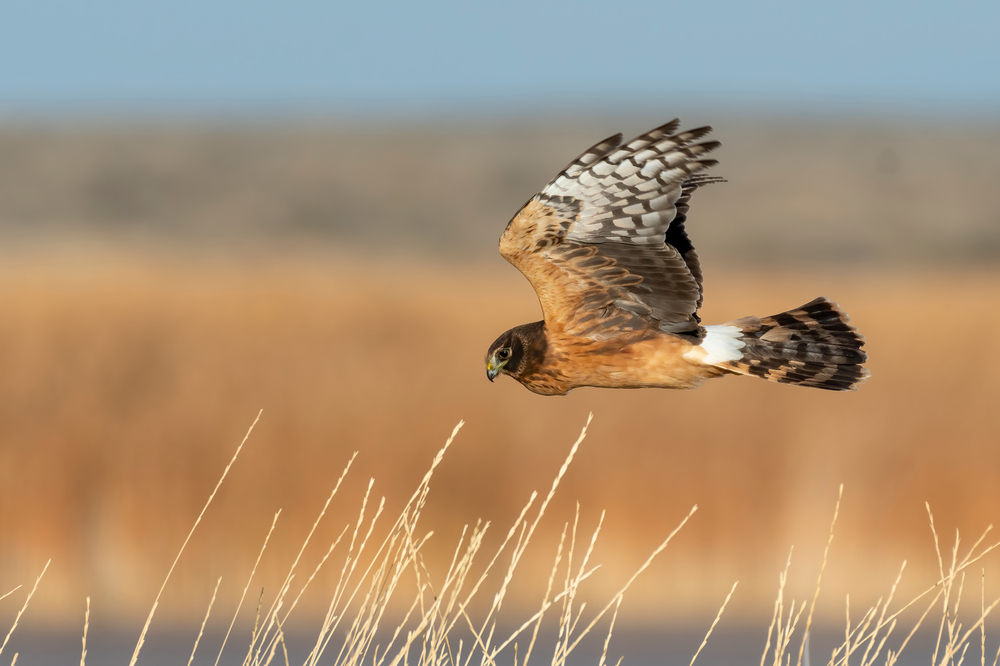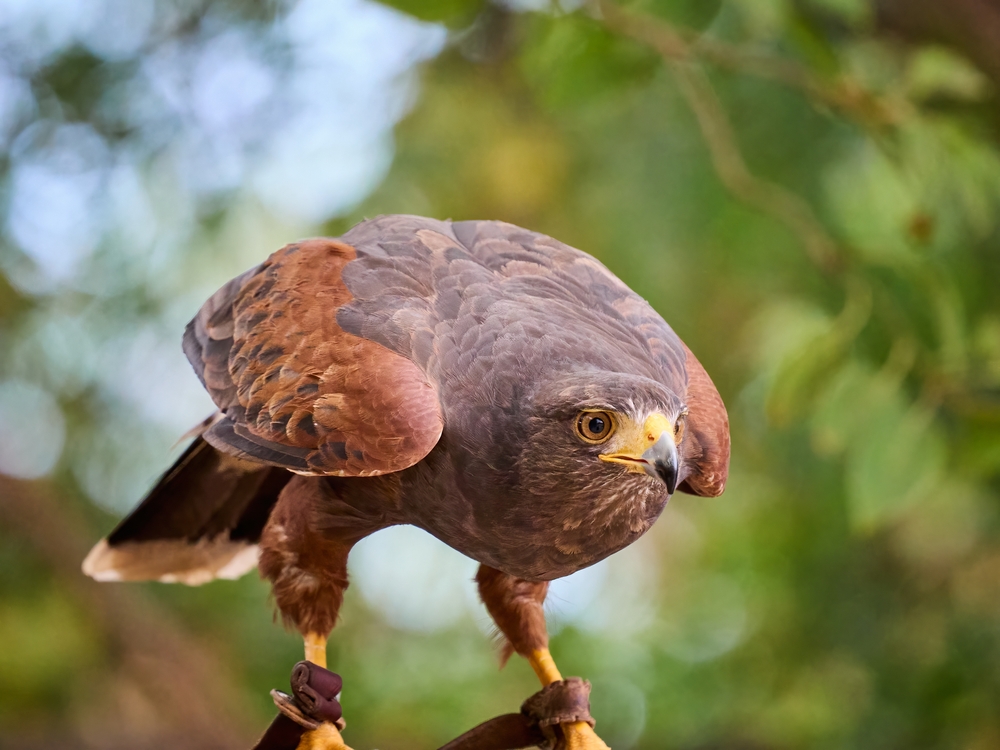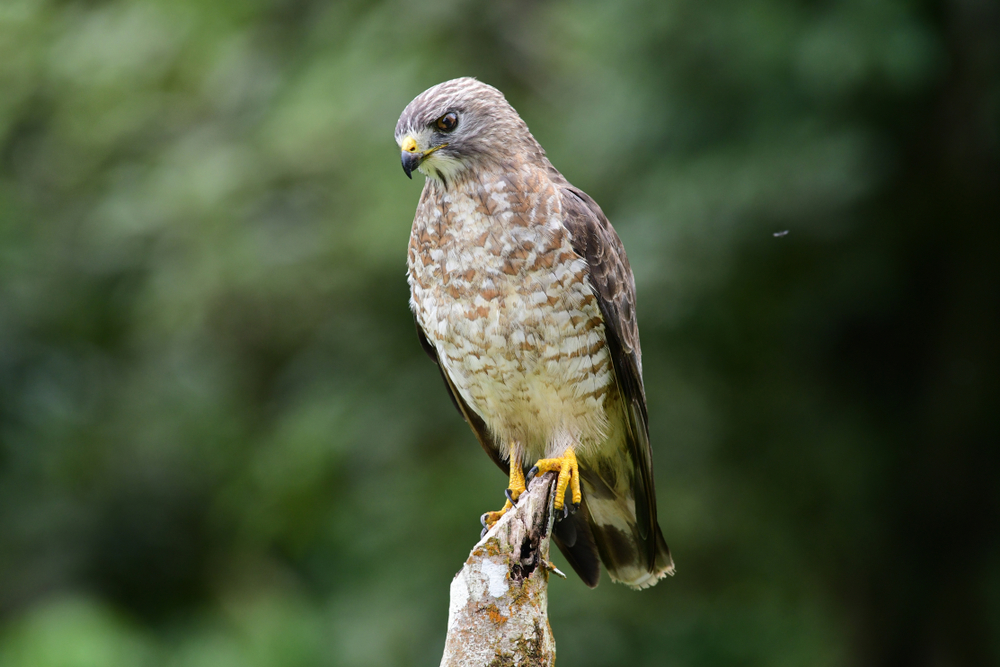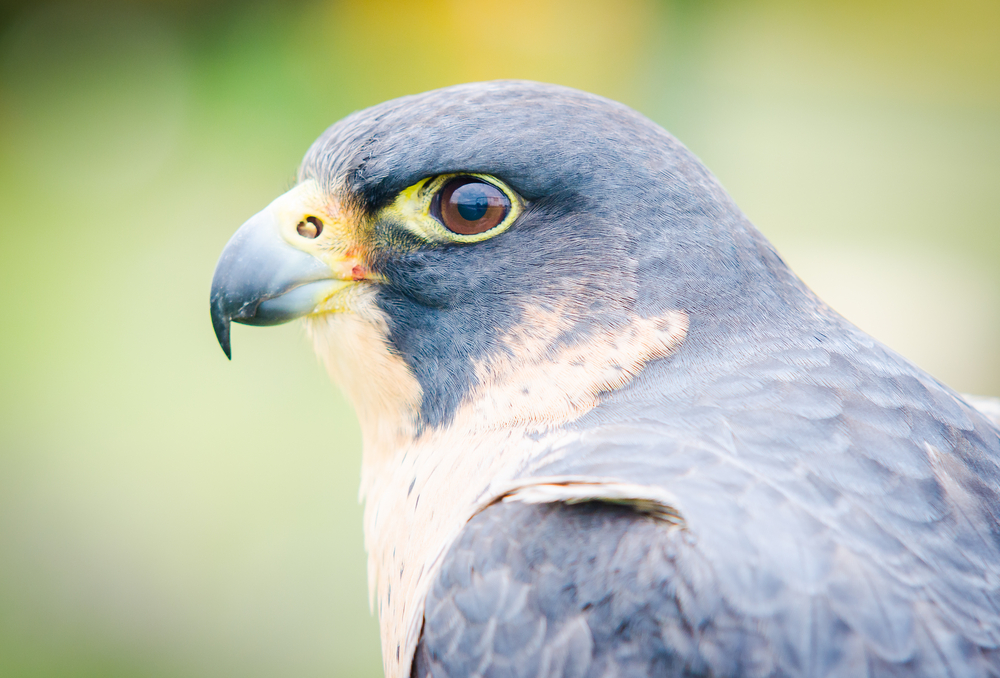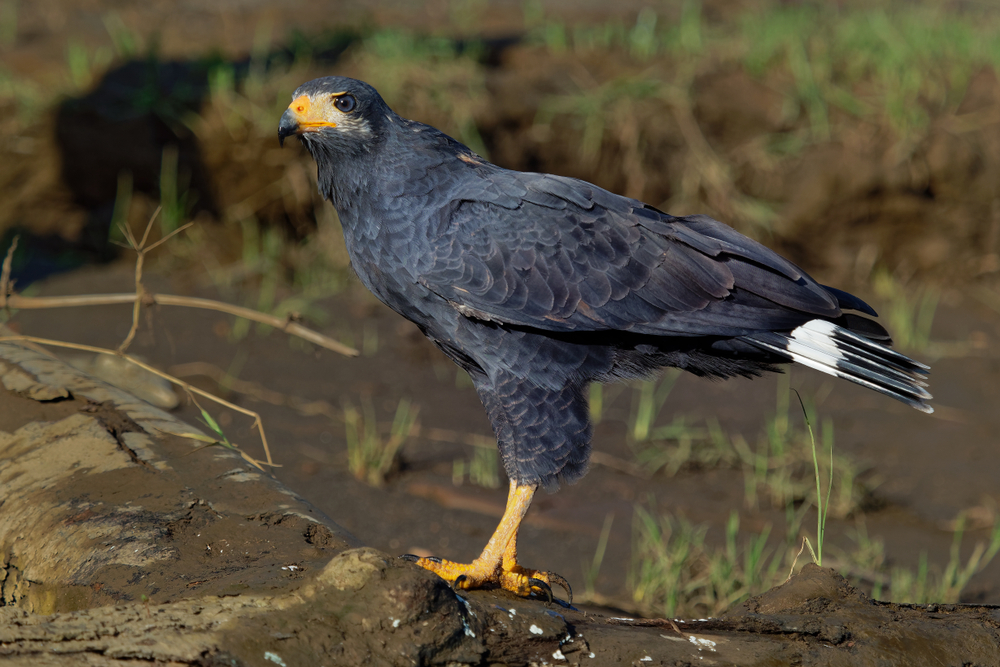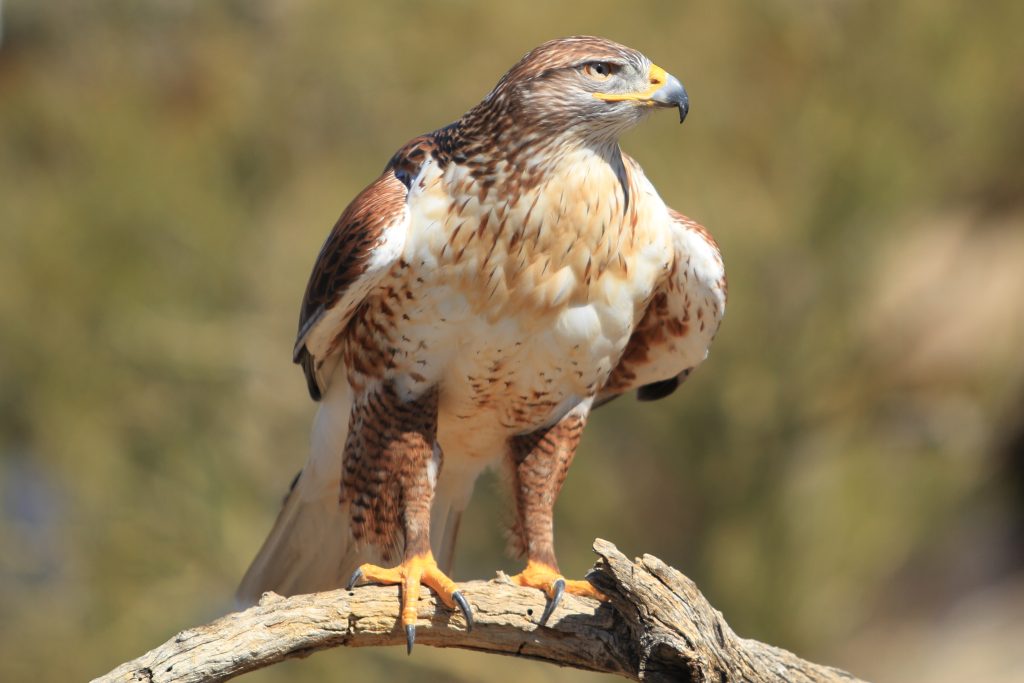The Northern Harrier’s closest relatives are other harriers in the genus Circus, particularly the Hen Harrier (Circus cyaneus) of Eurasia, which is so closely related that it was once considered the same species.
About
The Northern Harrier (Circus hudsonius) is a graceful raptor of the Accipitridae family, known for its low, buoyant flight over grasslands, marshes, and open fields. Found throughout North America, this hawk is distinctive for its owl-like facial disc and hunting style, gliding just above the ground to detect prey by sight and sound.
Medium in size, Northern Harriers measure 41 to 52 centimeters (16 to 20 inches) in length with a wingspan of 97 to 122 centimeters (38 to 48 inches). They have long, slender wings and a long tail, giving them an elegant, buoyant appearance in flight. Males are often called “gray ghosts” for their pale gray plumage and striking black wingtips, while females and juveniles are larger, brown overall, and heavily streaked. All have a distinctive white rump patch that is a key field mark.
Their diet is varied but primarily consists of small mammals like voles and mice, as well as birds, reptiles, and insects. Unlike many hawks, Northern Harriers rely partly on hearing, aided by their facial disc, to locate prey hidden in vegetation. They typically hunt by coursing low over fields, then dropping swiftly on unsuspecting animals.
Breeding occurs in open habitats, with nests built on the ground in dense vegetation such as reeds or grasses. Females lay four to six eggs, and while the female incubates, the male provides food. Interestingly, Northern Harriers are one of the few raptors known to practice polygyny, with a male sometimes mating with more than one female in the same season.
Although listed as Least Concern, populations have declined locally due to habitat loss, agricultural practices, and pesticide use. They remain widespread but require large tracts of open land to thrive.
With their ghostly flight, keen senses, and reliance on open landscapes, Northern Harriers are among the most distinctive and fascinating hawks of North America.
Physical Characteristics
The Northern Harrier (Circus hudsonius) is a slender, long-winged raptor of open fields, marshes, and grasslands, easily recognized by its low gliding flight and distinctive facial disk.
-
Plumage:
-
Males are pale gray above with whitish underparts, giving them the nickname “gray ghost.”
-
Females are larger, brown above with streaked buffy underparts.
-
Juveniles are rich brown above with cinnamon-colored underparts.
-
-
Face: Round, owl-like face with a pronounced facial disk that aids in sound localization while hunting. Bill is hooked, black-tipped with a yellow cere. Eyes are yellow in adults, darker in juveniles.
-
Body: Slim and lightweight, built for long, buoyant flight.
-
Wings: Long and broad but held in a distinct V-shape (dihedral) while gliding close to the ground.
-
Tail: Long and banded, often used for steering during low, weaving flights. A conspicuous white rump patch is a key field mark.
-
Feet: Yellow with slender talons, adapted for grasping small mammals and birds.
Size:
-
Length: About 18 to 20 in (46 to 51 cm).
-
Wingspan: Between 40 to 46 in (102 to 117 cm).
-
Weight: Ranges from 10 to 26 oz (290 to 740 g), with females much larger than males.
The Northern Harrier’s combination of long wings, owl-like facial disk, low coursing flight, and distinctive white rump patch make it one of the most recognizable and unique hawks of open-country habitats.
Reproduction
The Northern Harrier’s reproductive cycle is closely tied to its open-country habitat of marshes, prairies, and grasslands, where it nests on the ground rather than in trees.
-
Mating and Courtship:
-
Northern Harriers are typically monogamous, though males may sometimes be polygynous, mating with two or more females in the same season.
-
Courtship involves spectacular aerial displays, including sky dances where the male performs deep swoops, rolls, and dives to attract a mate.
-
-
Nesting:
-
Unlike most hawks, harriers build their nests on the ground, usually hidden among tall grasses, reeds, or marsh vegetation.
-
Nests are constructed from sticks, grasses, and reeds, often lined with softer materials like moss and leaves.
-
-
Egg Laying and Incubation:
-
The female lays 4 to 6 eggs, bluish-white in color.
-
Incubation lasts about 30 to 32 days, performed almost entirely by the female while the male provides food.
-
-
Chick Development:
-
Chicks hatch covered in white down and are brooded by the female during their early days.
-
The male delivers prey to the nest, which the female tears into smaller pieces to feed the chicks.
-
-
Fledging and Independence:
-
Young fledge at around 30 to 35 days, though they remain dependent on parents for food for another 2–3 weeks as they learn to hunt.
-
The Northern Harrier’s unusual practice of ground nesting and, at times, polygynous mating system set it apart from most other raptors, emphasizing its adaptation to open landscapes.
Lifespan
The Northern Harrier (Circus hudsonius) is a ground-nesting raptor of open marshes and grasslands with a moderate lifespan influenced by predation, habitat quality, and food availability.
-
Lifespan in the Wild:
Northern Harriers typically live 7 to 12 years, though some individuals may survive up to 15 years. Many young fail to survive their first year due to predation or starvation. -
Lifespan in Captivity:
In captivity or rehabilitation care, harriers may live up to 16 to 20 years, benefiting from steady food and veterinary protection.
Threats to the Northern Harrier:
-
Predation: Eggs and chicks are vulnerable to foxes, raccoons, coyotes, and larger birds of prey.
-
Habitat Loss: Conversion of marshes and grasslands to agriculture or urban areas reduces suitable nesting grounds.
-
Food Availability: Populations of small mammals, especially voles, strongly influence survival and breeding success.
-
Human Hazards: Pesticides, collisions with vehicles, and disturbance to ground nests pose additional risks.
Despite these pressures, the Northern Harrier remains widespread across North America, with populations stable in many regions due to its adaptability to a variety of open habitats.
Eating Habits
The Northern Harrier is a skilled low-flight hunter that relies on both sight and sound to detect prey, thanks to its unique owl-like facial disk.
-
Diet:
Their diet consists mainly of small mammals (especially voles, mice, and rabbits), along with small birds, reptiles, amphibians, and large insects. In marsh habitats, they also take frogs and waterfowl chicks. -
Foraging Strategy:
Harriers hunt by flying low over open fields and marshes with wings held in a V-shape (dihedral), gliding and hovering as they listen and watch for movement. -
Hunting Behavior:
They use a combination of keen vision and acute hearing to locate prey, then drop suddenly to snatch it with their talons.
Unlike many hawks, harriers often rely on stealth and surprise rather than sheer speed or power. -
Feeding the Young:
Males provide most of the food during the early nesting period, delivering prey to the female, who tears it into smaller pieces for chicks. Later, both parents hunt to meet the demands of growing young. -
Seasonal Variation:
In summer, diets are dominated by voles and small mammals in grasslands. In winter, especially in wetlands, they shift more to birds, including blackbirds and waterfowl.
The Northern Harrier’s reliance on sound to detect prey—made possible by its facial disk—sets it apart from most hawks, giving it hunting abilities more like those of an owl.
Uniqueness
The Northern Harrier (Circus hudsonius) is one of the most distinctive hawks of North America, with several traits setting it apart:
-
Owl-like Facial Disk: Unlike most hawks, harriers have a facial disk of feathers similar to owls, allowing them to use both vision and sound to locate prey.
-
Low, Graceful Flight: Known for their buoyant, moth-like flight, they patrol open fields and marshes just a few feet above the ground, wings held in a V-shape.
-
White Rump Patch: A bold white patch above the tail is a key field mark, flashing during flight and making the species instantly recognizable.
-
Sexual Dimorphism: Males and females look strikingly different—males are pale gray (“gray ghosts”), while females are large and brown with streaking.
-
Ground Nesters: Unlike most raptors that nest in trees or cliffs, harriers build their nests on the ground among grasses or reeds.
-
Polygynous Behavior: Males may mate with multiple females in the same season, an unusual trait among hawks.
The Northern Harrier’s owl-like hunting adaptations, distinctive white rump patch, and ground-nesting lifestyle make it one of the most unique and specialized raptors of open-country habitats.
Be the First to Share Photos of This Species.
FAQ’s
1. What is the species closest to the Northern Harrier?
2. How does the Northern Harrier compare to other hawks?
Unlike most hawks, Northern Harriers have an owl-like facial disk that enhances their hearing, helping them detect prey by sound as well as sight. They also nest on the ground, not in trees, and their long wings and buoyant, low flight distinguish them from bulkier forest and buteo hawks like the Red-tailed Hawk.
3. What national parks provide an opportunity to see the Northern Harrier?
Northern Harriers are widespread across North America in grasslands, marshes, and open fields. Parks where they are often observed include:
-
Everglades National Park (Florida) – wintering harriers over marshes.
-
Point Reyes National Seashore (California) – common in coastal grasslands.
-
Yellowstone National Park (Wyoming/Montana/Idaho) – seen in meadows and valleys.
-
Cape Cod National Seashore (Massachusetts) – frequent wintering grounds.
These protected landscapes provide the open habitats the Northern Harrier needs for hunting and nesting.



































































